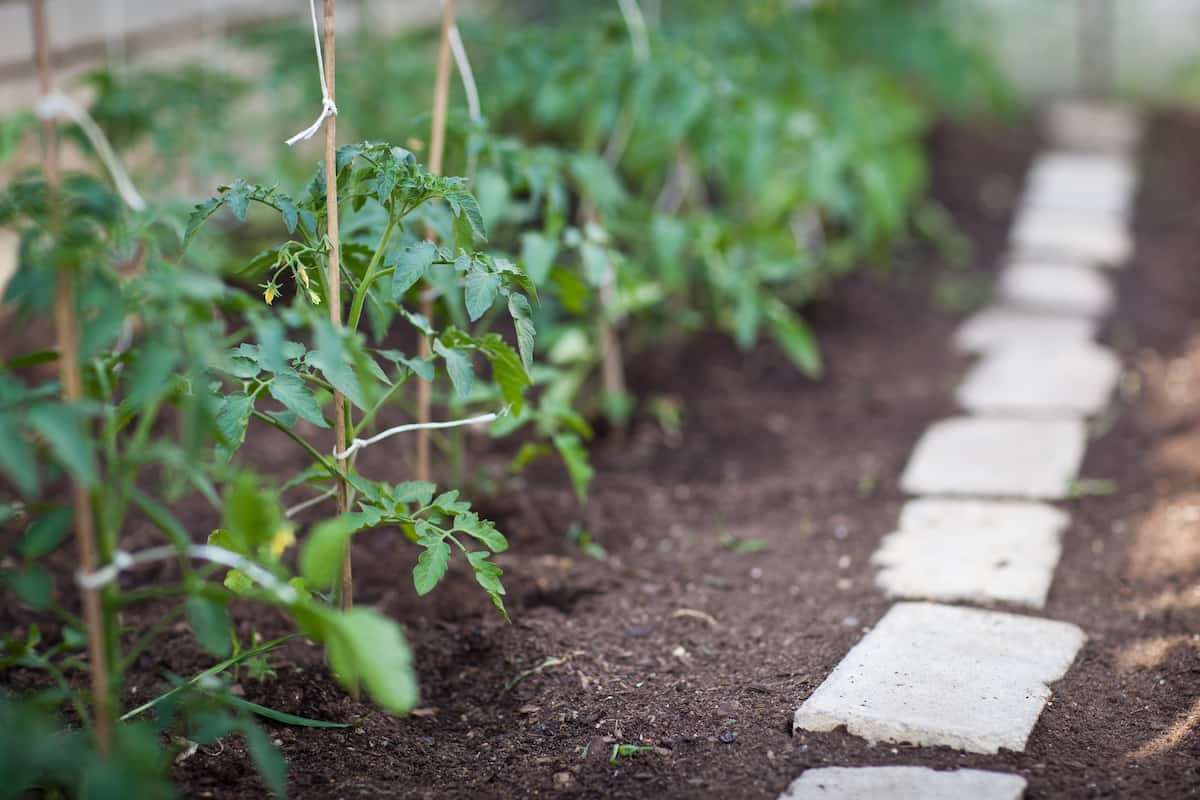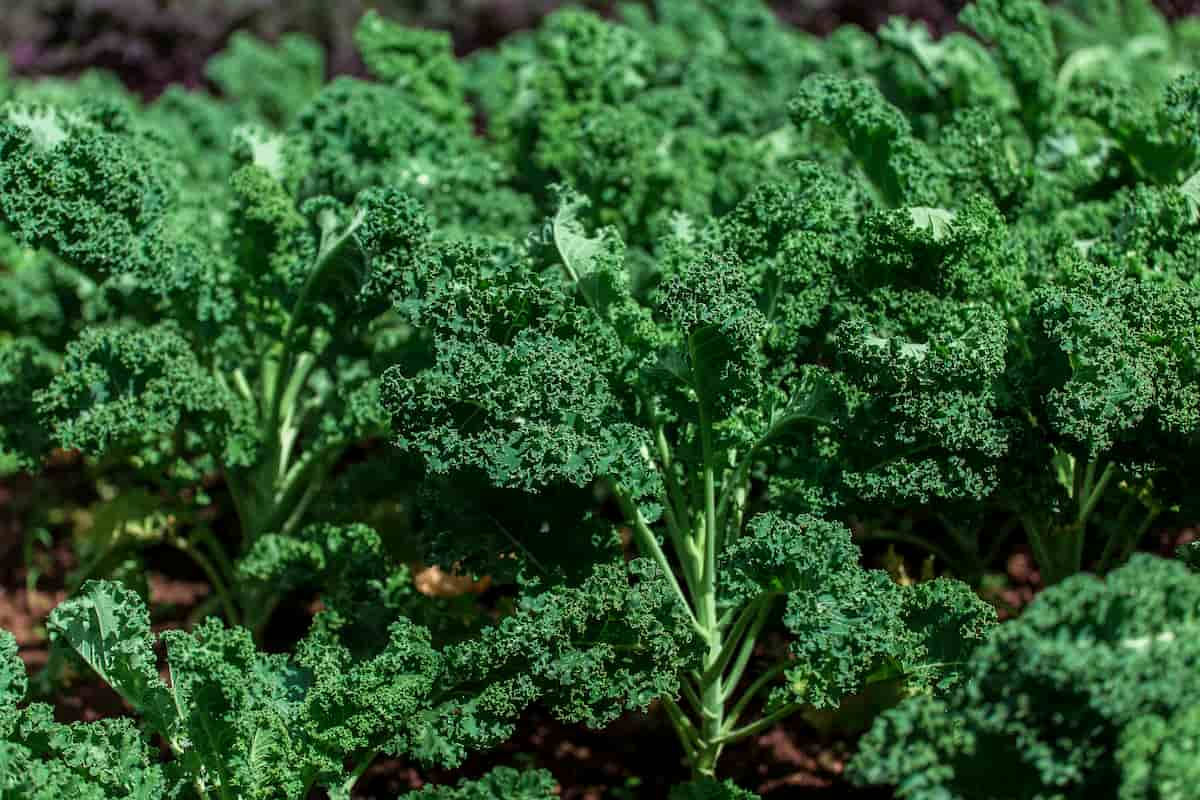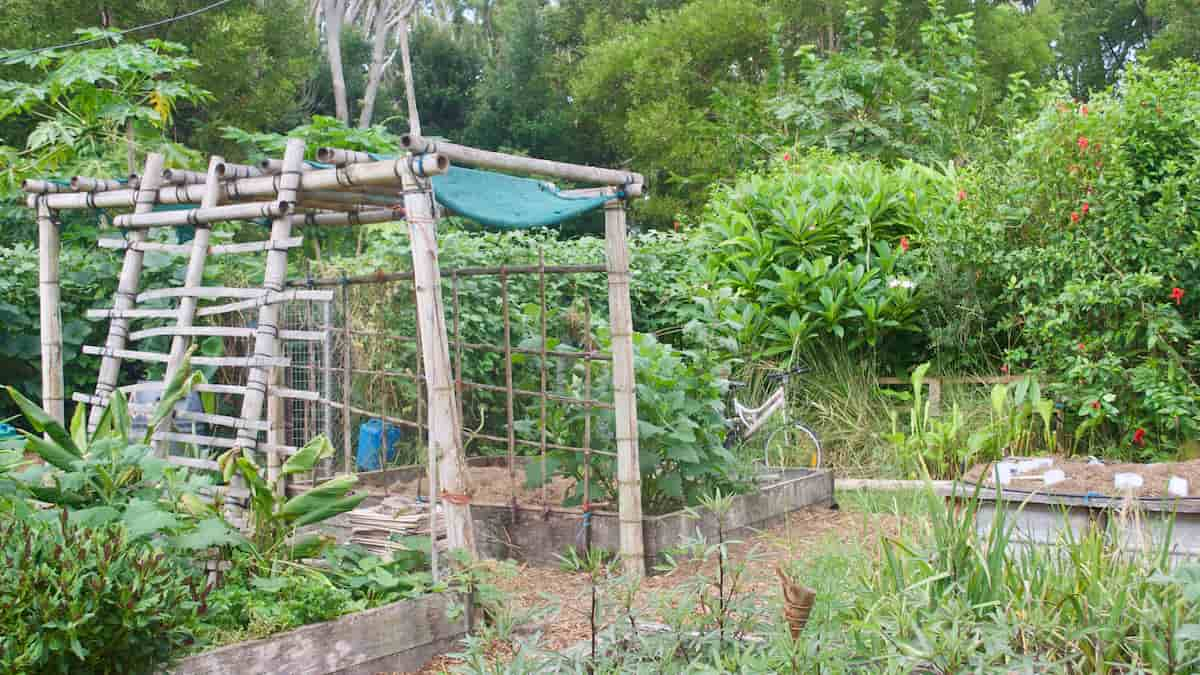Permaculture farming is a new and sustainable way to farm that combines traditional farming methods with modern ones to make a self-sufficient system and good for the environment. This farming method uses natural resources like water, soil, and plants to create a balanced and diverse ecosystem that helps plants and animals grow and thrive. The ultimate goal of permaculture farming is to create an autonomous and regenerative system that can meet the demands of the present while safeguarding the ability of the next generations to do the same.

A Guide to Permaculture Farming/Gardening
Definition of Permaculture Farming
Permanent agriculture is where the word “permaculture” comes from. It’s a framework for designing farms that are good for the planet, generate lots of food, and last forever. Environmental sustainability, biological variety, and ecological harmony form the basis of permaculture agriculture. Sustainable agriculture that doesn’t rely on outside resources incorporates organic cultivation, agroforestry, and reforestation.
Why is Permaculture Farming Important?
Permaculture is a method of designing communities and agricultural systems that mimic interactions found in natural ecosystems. This involves designing self-sustaining, low-maintenance, and productive systems in the long term. There are several reasons why permaculture is important.
First, permaculture promotes sustainability by reducing our impact on the environment. Permaculture systems use natural inputs and renewable resources, reducing our reliance on fossil fuels and other nonrenewable resources. This helps to conserve natural resources and habitats, promoting biodiversity and protecting the planet’s ecosystems.
Second, permaculture encourages using organic and regenerative practices that minimize chemical inputs. This can help to reduce the environmental impact of conventional agriculture, which relies heavily on synthetic fertilizers, pesticides, and herbicides.
Third, permaculture systems can provide a better quality of life for those involved. By designing low-maintenance and productive systems, permaculture can reduce the labor required to maintain them, freeing up time for other activities. This can lead to a more balanced lifestyle focusing on community and personal well-being.
Where is Permaculture Used?
- Agriculture: Permaculture principles are widely used in agriculture, including small-scale organic farming, community-supported agriculture (CSA), and agroforestry systems. Permaculture design focuses on building soil health, maximizing water conservation, and creating diverse, resilient ecosystems.
- Landscaping: Permaculture principles are also commonly used in landscaping and garden design, including creating food forests, green roofs, and rain gardens. These systems are designed to be productive, low-maintenance, and ecologically sound.
- Architecture: Permaculture design principles are used in green building and sustainable architecture, including natural materials, passive solar design, and energy-efficient systems. Permaculture design can also be applied to urban planning, helping to create more sustainable and resilient cities.
- Community development: Permaculture principles are used in community development projects, including creating community gardens, eco-villages, and sustainable housing projects. Permaculture design focuses on building strong, self-sufficient, resilient communities that adapt to changing conditions.
- Education: Permaculture principles are used in education, including permaculture design courses, workshops, and internships. These programs teach people how to apply permaculture principles in their lives and communities, helping create a more sustainable future.
In case you missed it: Organic Farming Certification Requirements in Texas: Documents and Application Process

Benefits of Permaculture Farming
- Reduced cost: By using natural ecosystem components like composting waste into useful organic matter, permaculture saves money that would otherwise be spent on conventional farming.
- Less waste: Permaculture recycles waste products and manures them back to the earth as compost, reducing waste and optimizing resource utilization.
- Chemical resistance: Using natural fertilizers and mulch instead of harmful pesticides makes permaculture more resistant to chemicals.
- Less pollution: Permaculture, a natural way of agricultural cultivation, helps keep the environment pollution-free.
- Develops community values: Permaculture teaches values like creating less pollution, helping others, and using only what you need.
- Zoning: Permaculture arranges produce depending on what ripens first and what needs more attention, optimizing harvesting and maintenance.
- Self-reliance and diversity: Permaculture allows for producing a diverse range of produce, promoting self-reliance and reducing reliance on external sources.
- Promotes green living: Using natural fertilizers, natural pesticides, and freshwater reserves, permaculture promotes green living in the backyard style.
- Helps improve environmental conditions: Permaculture integrates human dwellings, micro-climate, plants, animals, soil, and water productively and stably, improving the environmental conditions around it.
- Can be applied in already functioning systems: Permaculture can be applied in different agricultural systems that are already functioning, provided the land is suitable for it.
Principles of Permaculture
- Observation: This principle encourages people to observe and understand the relationships between all the parts of a system, over some time if necessary, before making any changes or decisions.
- Boundaries: This principle acknowledges the importance of physical and conceptual boundaries in any design or system and considers how they may affect its functioning.
- Resources: This principle encourages people to consider all the available resources, including people, plants, animals, and funding, and how they can be used and managed sustainably.
- Evaluation: This principle involves integrating the information gathered from observation, boundaries, and resources to prepare for the next steps of designing and implementing a permaculture system.
- Design: This principle involves designing the permaculture system that considers the observed relationships, boundaries, and available resources and attempts to foresee future interrelationships.
- Implementation: This principle involves implementing the design and may involve multiple stages or phases depending on the system’s complexity.
- Maintenance: This principle involves minor adjustments to keep the permaculture system healthy and functioning over time. Major adjustments should be avoided by careful observation and design.
Permaculture Farming Implementation Techniques
- Companion planting is planting various crops with a mutually beneficial relationship, such as one plant shading another or repelling pests.
- Compost, manure, and other organic materials are used as natural fertilizers to promote soil health and fertility.
- Rotating crops each season to prevent soil depletion and reduce pest and disease problems is the definition of crop rotation.
- Agroforestry imitates natural ecosystems by combining trees and vegetation with crops and animals to maximize productivity.
- Utilizing mulch, such as leaves or fiber, to retain soil moisture, prevent weed growth, and add organic matter.
- Integrating beekeeping into the agricultural system to increase pollination and produce honey and beeswax.
- Animal integration is the practice of raising animals in a manner integrated with the agricultural system, such as using their manure as fertilizer or allowing them to forage on cover crops.
- Swales: The excavation of trenches along contour lines to retain water in the soil and prevent erosion.
- Implementing renewable energy sources, such as solar or wind power, to reduce dependence on nonrenewable resources.
In case you missed it: How and When to Apply Organic Vermicompost Fertilizer Manure: For Your Indoor, Terrace, and Container Plants

Conclusion
Permaculture farming uses natural resources and ecosystem design to build self-sustaining systems. It reduces cost, waste, chemical protection, and environmental impact. Its principles and implementation methods can support sustainable life and a healthier planet.
- Feed Your Flock for Less: Top 10 Tips to Save on Chicken Feed
- Ultimate Guide to Ossabaw Island Hog: Breeding, Raising, Diet, and Care
- Hatching Answers: The Top 10 Reasons Your Chickens Aren’t Laying Eggs
- Eggs and Economics: Breaking Down the Cost of Raising Backyard Chickens
- Defend Your Greens: Proven Methods to Keep Iguanas Out of Your Garden
- Ultimate Guide to Cinnamon Queen Chicken: A Comprehensive Guide for Beginners
- Ultimate Guide to California Tan Chicken: Breeding, Raising, Diet, Egg-Production and Care
- Ultimate Guide to Marsh Daisy Chicken: Breeding, Raising, Diet, and Care
- 10 Types of Chicken Farming Businesses You Can Start for Profits